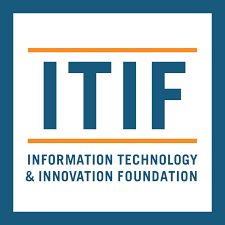New Report Shows State of U.S. Broadband Deployment Is Strong; The Country’s Biggest Challenge Is Broadband Adoption
Washington, December 5, 2022—The United States ranks among the leading countries in deploying fast broadband, doing so at competitive prices. But it lags behind other countries in broadband adoption, according to a new report from the Information Technology and Innovation Foundation (ITIF), the leading think tank for science and technology policy.
The report analyzes the latest data on broadband deployment, adoption, and prices to benchmark the U.S. broadband ecosystem against other nations.
“The state of the U.S. broadband ecosystem is strong overall,” said Jessica Dine, a research assistant for broadband policy at ITIF, who co-authored the report. “The United States is doing particularly well in fixed broadband deployment compared to other countries—especially those with roughly comparable population densities. Services are available almost everywhere. But there is room for improvement when it comes to adoption. If policymakers want to close the digital divide, that is where they should focus the most attention.”
The report finds that the United States leads the world in broadband deployment with high-speed service available to 98 percent of households. But its adoption rates are closer to average for developed countries at 90 percent, including fixed and mobile connections.
Survey data suggest that the most common barriers to household adoption are a lack of interest in being online, a lack of digital literacy, options to access the Internet outside of one’s home, the cost of a computer, and the cost of a subscription.
The new report revisits an analysis that ITIF first conducted in 2013, when having a broadband connection wasn’t as much of a necessity for many people. This iteration reassesses U.S. broadband progress in the modern-day context of widespread reliance on the Internet. It finds that U.S. mobile coverage is ubiquitous, with 4G covering almost 100 percent of the population and that most Americans can access speeds above the Federal Communications Commission’s baseline.
“This report not only highlights the state of the Internet ecosystem but also the many complexities and shortcomings with data used to evaluate it. That’s why it’s important to steer clear of a myopic focus on a single dataset or aspect of the broadband,” said Joe Kane, co-author of the report and director of broadband and spectrum policy at ITIF. “By keeping an eye on facts and data, policymakers will avoid missing the forest for the trees and can then foster the benefits of connectivity into the next decade.”
 The Information Technology and Innovation Foundation (ITIF) is an independent, nonprofit, nonpartisan research and educational institute focusing on the intersection of technological innovation and public policy. Recognized by its peers in the think tank community as the global center of excellence for science and technology policy, ITIF’s mission is to formulate and promote policy solutions that accelerate innovation and boost productivity to spur growth, opportunity, and progress. Learn more at itif.org.
The Information Technology and Innovation Foundation (ITIF) is an independent, nonprofit, nonpartisan research and educational institute focusing on the intersection of technological innovation and public policy. Recognized by its peers in the think tank community as the global center of excellence for science and technology policy, ITIF’s mission is to formulate and promote policy solutions that accelerate innovation and boost productivity to spur growth, opportunity, and progress. Learn more at itif.org.





